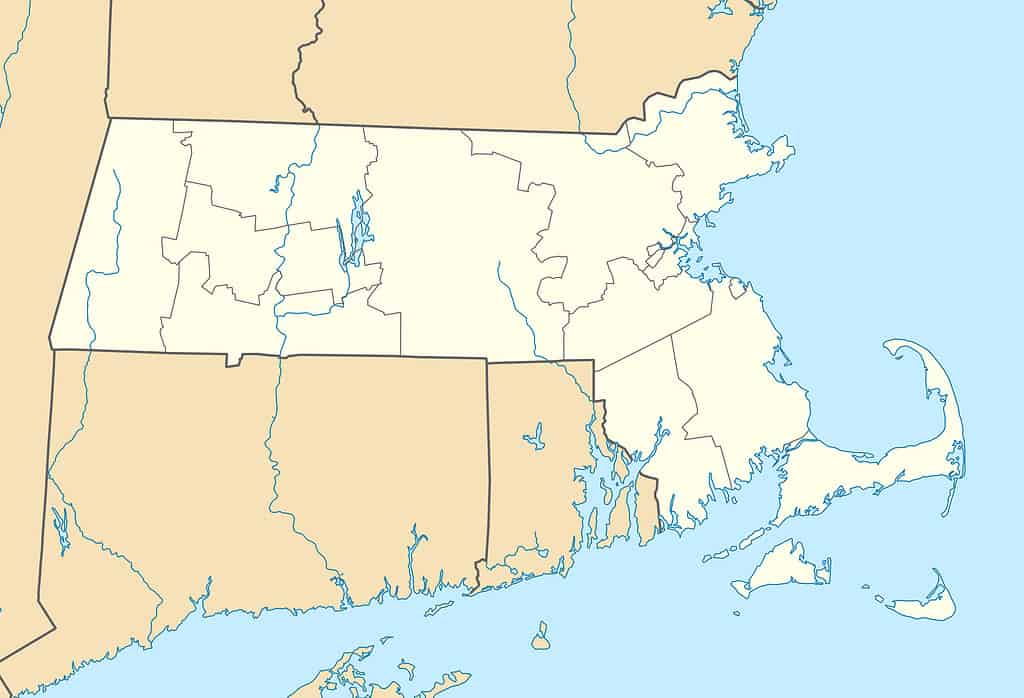
The risk of flying animals in Massachusetts is relatively low.
©Alexrk2 / CC BY 3.0 – License
Massachusetts is home to various flying animals. However, when it comes to the danger they pose to humans, it’s important to note that the risk is relatively low. The most dangerous flying animals in Massachusetts would be those that could potentially transmit diseases, cause infection, cause allergic reactions, or cause discomfort. Below we look at the most dangerous flying animals in Massachusetts.
Of course, it is essential to take precautions when spending time outdoors in Massachusetts. You always want to reduce the risk of insect bites or encounters with potentially harmful flying animals. To stay safe, you should use insect repellent, wear appropriate clothing, and stay aware of any local health advisories related to any illnesses that could potentially be spreading.
Is Massachusetts Wildlife Particularly Dangerous?

Ticks are common in Massachusetts.
©Jerry Kirkhart from Los Osos, Calif. / CC BY 2.0 – License
Massachusetts, like most states in the United States of America, has a variety of wildlife species. Notably, it is not a particularly dangerous state in terms of its wildlife. The state’s most common species include white-tailed deer (Odocoileus virginianus), raccoons (Procyon lotor), birds (Aves), and squirrels (Sciuridae), which are not typically considered dangerous to humans. However, there are some dangerous species in Massachusetts.
There is a significant tick population in the Northeast, and that includes Massachusetts. Ticks (Ixodida) can transmit dangerous diseases like Lyme disease. Mosquitoes (Culicidae), which are also incredibly prevalent in Massachusetts, can spread West Nile virus and Eastern Equine Encephalitis (EEE). There is a population of black bears (Ursus americanus) in Massachusetts, and while black bears are not usually aggressive, they can be. So, it is imperative to exercise bear safety. The timber rattlesnake (Crotalus horridus), a venomous species, lives in Massachusetts. Humans should always exercise caution around timber rattlesnakes. Lastly, coyotes (Canis latrans) live in Massachusetts, and humans should always exercise caution around them, too.
Now let’s focus on the six most dangerous flying animals in Massachusetts.
1. Mosquitoes

Mosquitoes are not directly dangerous on their own. However, they can transmit diseases like West Nile virus and Eastern equine encephalitis (EEE). These diseases can cause severe illness and, in some cases, death. While these diseases can be serious, the risk of contracting them is generally low. However, it’s important to take precautions, especially during peak mosquito season. If you are going to be outside in an area where you are at risk for mosquito bites, you should wear insect repellent and clothing that covers your skin.
Some people can experience allergic reactions to mosquito bites. These reactions can cause significant discomfort, including redness, swelling, itching, and, in rare cases, more severe allergic responses. Regardless of the risk of disease transmission, mosquito bites are often itchy and irritating.
2. Bees and Wasps
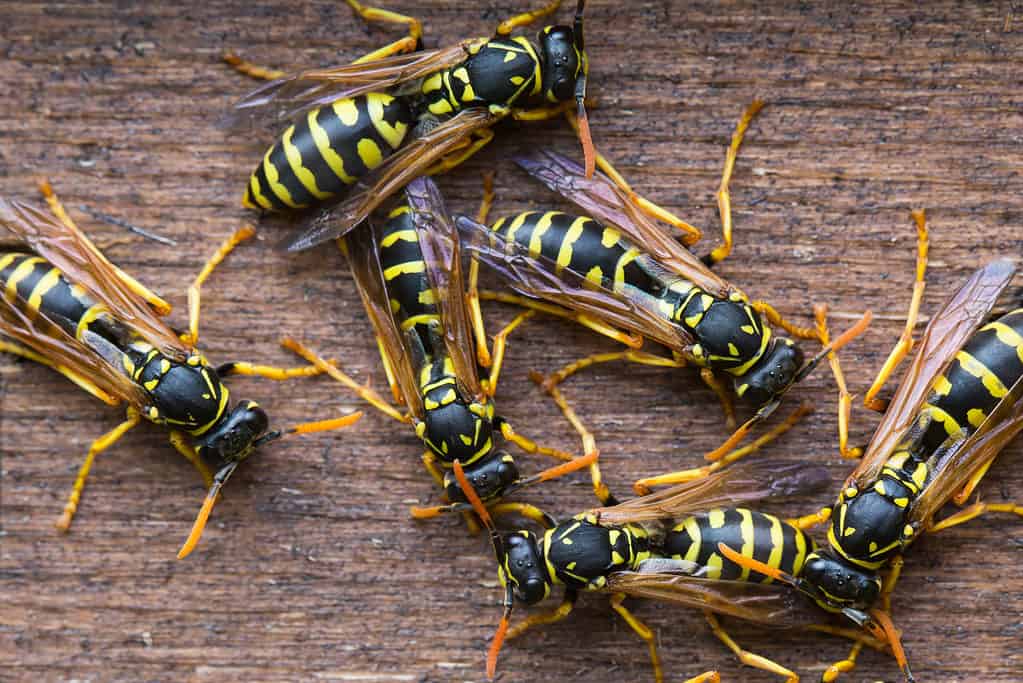
If you are allergic to bees or wasps, you should take extra precautions.
©FCerez/Shutterstock.com
Some people may be allergic to bee and wasp stings, which can cause severe reactions. While these insects are not generally aggressive, encounters can occasionally lead to stings. You should exercise caution, especially if you know you are allergic.
There are a few things you can do to stay safe around bees (Apis mellifera) and wasps (Vespidae). If you encounter one of these insects, you should remain calm and avoid swatting at them. Bees and wasps are more likely to sting when they perceive a threat or disturbance. If you’re in an area where bees and wasps are active, you should consider wearing long sleeves, long pants, and closed-toe shoes. Bees are often attracted to bright colors and floral patterns, so it’s best to avoid wearing such clothing when spending time outdoors. Bees and wasps are also attracted to scented lotions, perfumes, and hair products. Therefore, if you avoid using those, you can protect yourself.
Remember that bees and wasps play important roles in ecosystems, such as pollinating plants. In most cases, they won’t sting unless they feel threatened. By taking these precautions, you can reduce the likelihood of bee and wasp stings and minimize the risk of an allergic reaction.
3. Black Flies
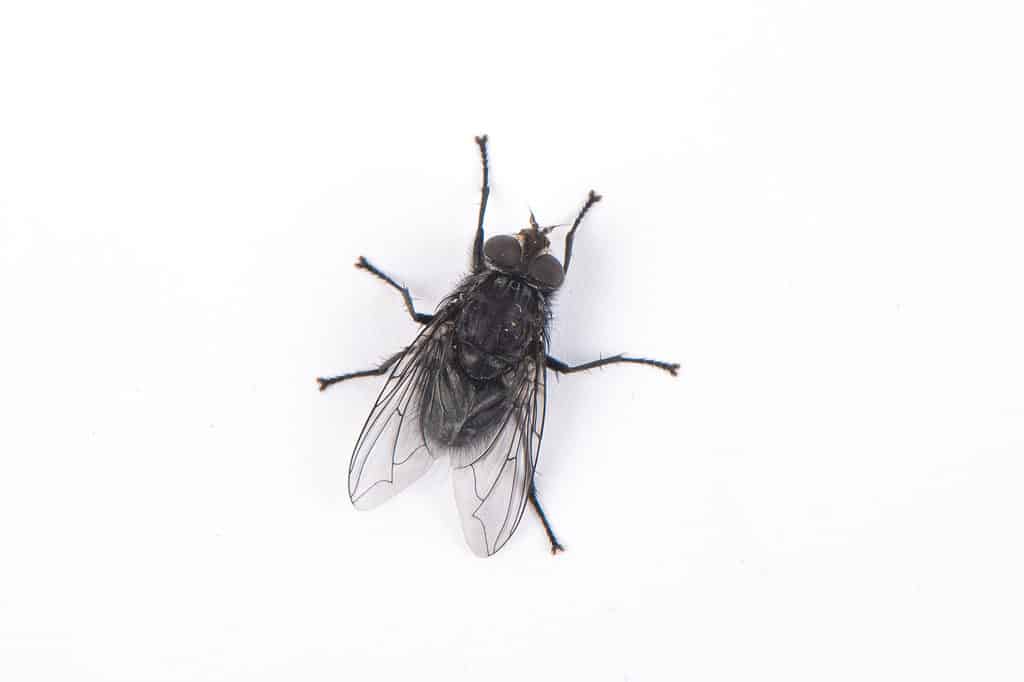
Black flies are infamous for their bites that cause itching, swelling, and inflammation.
©iStock.com/zhikun sun
Sometimes people call black flies (Simuliidae) “gnats.” They can cause painful bites, which can cause itching and discomfort. When they bite, they can break the skin and feed on blood. They often leave an itchy, swollen, and sometimes painful bite mark. Scratching black fly bites can lead to open sores. This could lead to an increased risk of infection.
Some people are hypersensitive to black fly bites. These people might experience severe allergic reactions. These reactions can cause extreme swelling, redness, and localized pain. In rare cases, bad allergic reactions can require medical attention.
For the most part, however, black flies are more of a nuisance than a significant danger.
4. Deer Flies and Horse Flies

Horse
fly bites can be incredibly painful.
©Shidlovski/iStock / Getty Images Plus via Getty Images
These large, biting flies can deliver painful bites.
Deer fly (Chrysops) bites are often very painful, but they can vary from person to person. When deer flies bite, they use their scissor-like mouthparts to cut the skin and feed on blood.
Horse flies (Tabanidae) are known for their painful bites, and while they are not typically dangerous in terms of transmitting diseases, their bites can cause several issues and discomfort.
People can be allergic to both of these biting flies. And like all kinds of bug bites, if you scratch at an open wound, you can be at risk for infection.
Generally, though, the impact of both deer flies and horse flies is primarily limited to causing discomfort.
5. Gypsy Moths
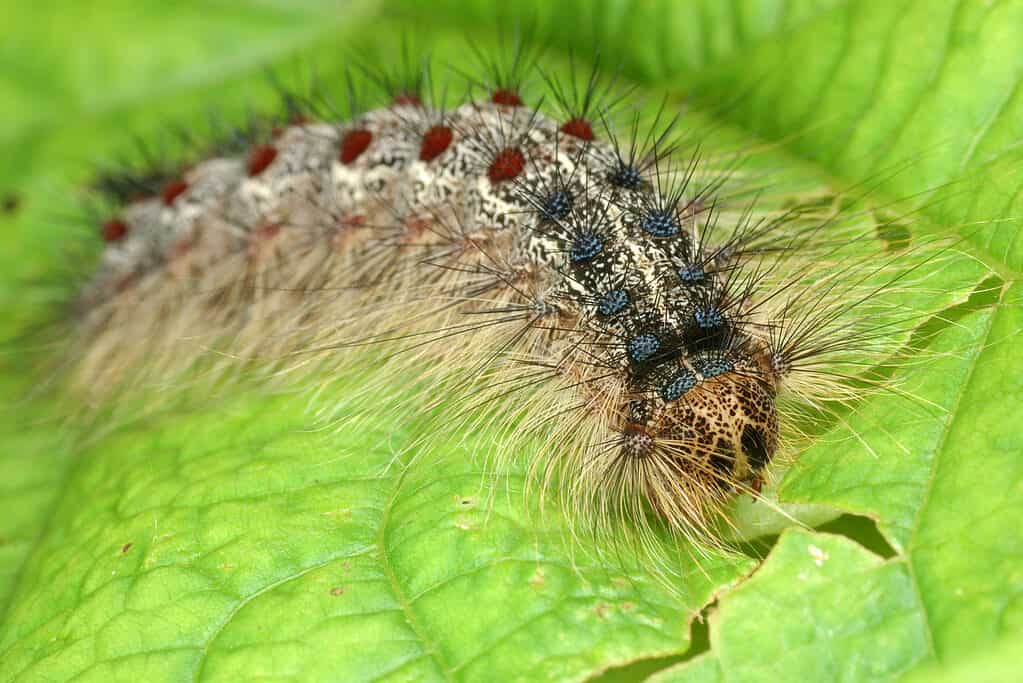
Gypsy moth infestations can pose environmental dangers.
©D. Kucharski K. Kucharska/Shutterstock.com
While not dangerous to humans, gypsy moths (Lymantria dispar dispar) can be considered a nuisance in some parts of Massachusetts. The caterpillars can defoliate trees, which can have ecological and economic impacts. While many trees can recover from a single year of defoliation, repeated defoliation by gypsy moths can lead to tree mortality, especially in weakened or stressed trees. Gypsy moth infestations can result in substantial economic losses in industries such as forestry and tourism.
6. Bats
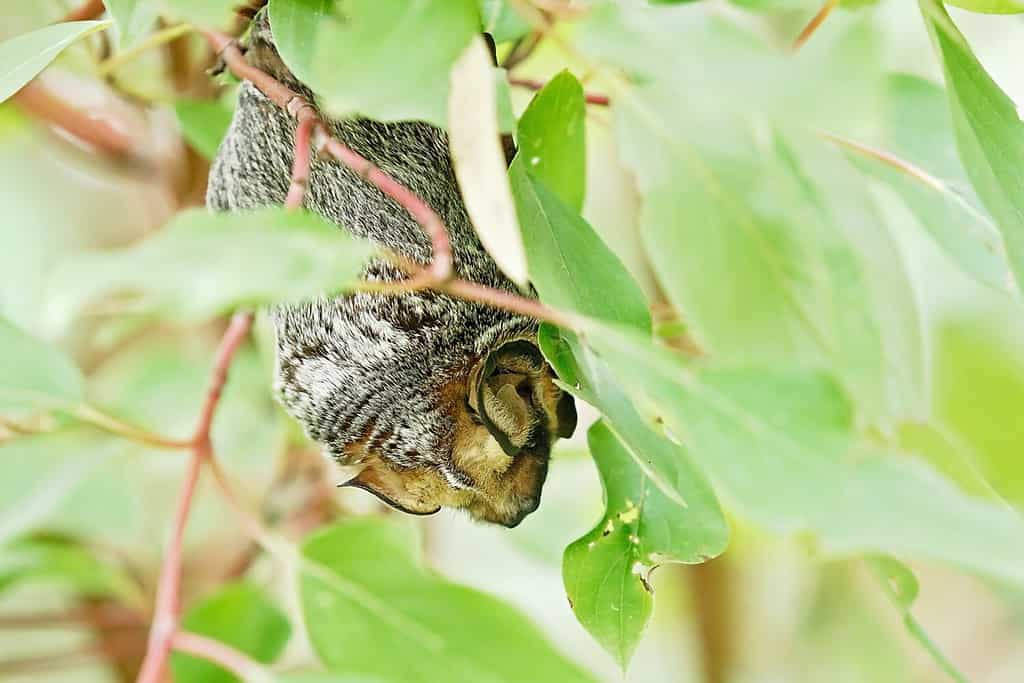
Hoary bats live in Massachusetts.
©Jamie McMillan/Shutterstock.com
Massachusetts is home to several species of bats (Chiroptera), including both migratory and resident species. The little brown bat (Myotis lucifugus) is one of the most common bat species in the state. Other common bat species include big brown bats (Eptesicus), eastern red bats (Lasiurus borealis), silver-haired bats (Lasionycteris noctivagans), and hoary bats (Lasiurus cinereus).
Bats, in and of themselves, are not inherently dangerous. Bats play a crucial role in ecosystems by helping control insect populations, pollinating plants, and dispersing seeds.
However, bats can carry diseases, some of which can be transmitted to humans. Rabies is one of the most well-known diseases associated with bats. While rabies transmission from bats to humans is relatively rare, it is a potentially deadly disease. Therefore, any physical contact with a bat or a bite should be taken seriously. If you come into contact with a bat, it’s important to seek medical advice immediately.
In areas where bats roost, their droppings, called guano, can accumulate. Inhaling dust from bat guano can lead to a respiratory disease called histoplasmosis. Therefore, if you have a bat infestation in your home, it’s important to address it properly and take precautions to avoid exposure to guano.
Bats can sometimes roost in buildings, attics, or other structures.
Ultimately, bats are not dangerous when they are left undisturbed in their natural habitats. However, if they are found in or around your home or if you come into direct contact with a bat, it’s important to exercise caution and take appropriate steps to avoid potential health risks.
| Rank | Animal |
|---|---|
| 1. | Mosquitoes |
| 2. | Bees and Wasps |
| 3. | Black Flies |
| 4. | Deer Flies and Horse Flies |
| 5. | Gypsy Moths |
| 6. | Bats |
The photo featured at the top of this post is © Luke Marcos Imbong / CC BY-SA 4.0 – License / Original
Thank you for reading! Have some feedback for us? Contact the AZ Animals editorial team.






